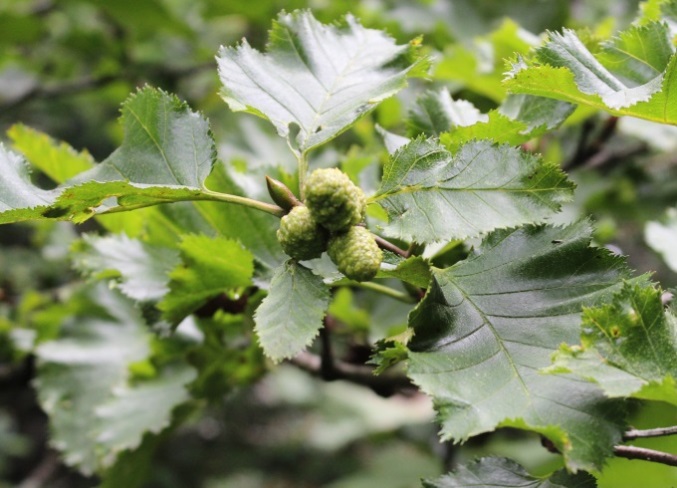Thinleaf Alder

Botanical Name: Alnus incana
Common Name: Thinleaf Alder
Other Names: Uqgwik
Found in: Moist places from lowland to subalpine elevations
Physical Characteristics: Has grayish branches with whitish markings and grows up to 9 feet tall. Leaves are round to oval and pointed with fine, sharp teeth. The topside of the leaves are dark green and glabrous. The underside of the leaves have hairs on the veins. It is a fast-growing shrubby tree that loves sunlight and fixes nitrogen in the soil for other plants. Bud scales overlap each other. Cones are on stems that are longer than the cones.
Nutritional Value: It’s detoxifying, both as a blood purifier and a lymphatic cleanser. It’s also astringent and good for supporting absorption of nutrients in the small intestine. Alder is also used internally as a remedy for tuberculosis and sore throat; externally as a wash for skin infections
Parts of the plant used: Bark, switches, cones, blocks of wood.
When plant should be gathered: fresh inner bark, and green berries in the spring, brown alder cones in the fall. Wood for heat, and/or smoke house can be gathered year round
Plant applications: Chew, infusion/decoction, switch, blocks of wood
Reported Benefits: Arthritis, diarrhea, sore throat, sore muscles, home heat, furniture
Preparation/Processing: Arthritis, sore muscles and skin sore breakouts: branches gathered in the spring when they are sticky were used as steam bath switches and to help alleviate arthritis, sore muscle pain, and also were used to prevent skin sores from breaking out.
Diarrhea: Female alder cones were sucked and the juice swallowed to treat diarrhea. The number of cones recommended varied from one to many. In addition the cones were boiled and the resulting tea drunk for diarrhea (Wennekens 1985). Fresh inner bark was chewed and the juice swallowed for the same ailment (Russel 1991). You put 3 or 4 little berries in a pot and boil them for half an hour and then drink 2 or 3 teaspoons of liquid 3 or 4 times a day. If it doesn’t stop your diarrhea, make it stronger. Take as much as you want until the diarrhea slows down (English Bay Students in Russel 1991). It was also noted that brown alder cones were boiled into a tea and drunk for the same ailment (Port Graham Students in Russel 1991)
Home heat, furniture and smoke (for smoke house) is derived from the wood of the tree.
